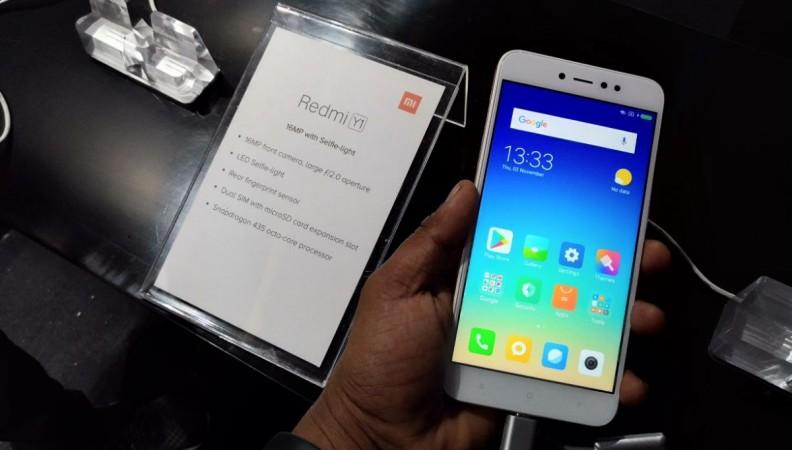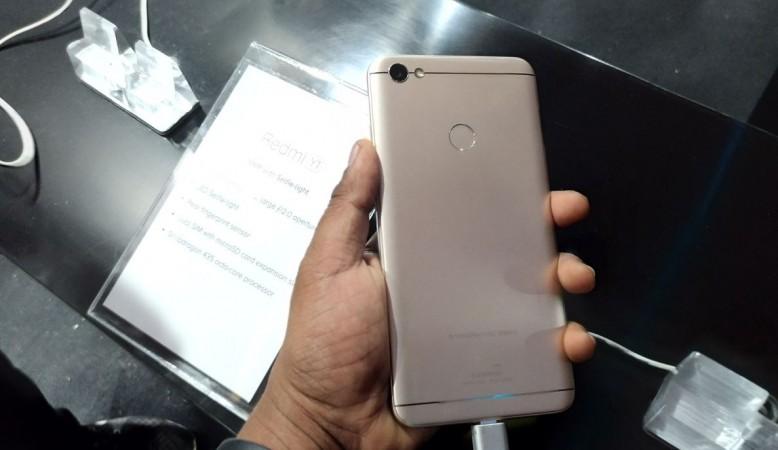Xiaomi has unveiled the company's brand new selfie camera oriented Redmi Y1 and the Y1 Lite phone series in India.
The new Redmi Y1 is the standard model with top-notch hardware, while the Y1 Lite, as the name suggests, is the watered down version. I spent a brief time with the devices at the demo lounge after the launch in New Delhi and here's my take on them.
Also read: Xiaomi Mi A1 review: Best Android One series. PERIOD.
Design and Display:
Both the phones flaunt pretty identical design language in terms of exterior body. They come with 5.5-inch HD (1280x720p) display with curved edges around the corners and smooth metallic cover on the back.

They also come with the power button on the right side with volume rockers on top and hybrid SIM tray slot with the option of two SIMs and dedicated space for microSD slot, a long-awaited feature finally incorporated by the company.

But, differ in three aspects: Y1 flaunts a dedicated LED flash with 16MP snapper on the front and a fingerprint sensor on the back. It also features 2.5D curved glass layer on the front panel.
On the other hand, Y1 Lite sports a less superior 5MP camera and lacks LED flash support, 2.5D glass shield and the finger scanner on the rear-side.
Processor, RAM and mobile operating system:
Redmi Y1 comes with Qualcomm Snapdragon 435 octa-core with 3GB/4GB RAM and 32GB/64GB storage. Whereas Redmi Y1 Lite houses less superior Qualcomm Snapdragon 425 quad-core backed by 2GB RAM and 16GB storage.

As mentioned before, both the devices come with microSD card support and users can expand it up to 128GB.
Also, the Redmi Y1 series (review unit) comes with MIUI 8.5 series OS out-of-the-box. It will soon get the MIUI 9 and brings a boatload of upgrades over MIUI 8 series including custom stickers specific to Indian users, 21 animated icons, system optimisation to increase the speed of the response.

During our brief interaction with the phones, they responded fast in terms of app loading and launching the camera app. But, we reserve to pass the final judgement on the phone after we perform other tests and run it on benchmarking apps.

Camera:
The Redmi Y1 comes with a 16MP camera with f/2.0 aperture, 76.4-degree wide angle lens, LED flash support. To further enhance the photography experience, the company has incorporated video call real-time Beautify feature with 36 different profiles, face recognition and Selfie timer.

In the demo zone, the lighting was little dim, but Redmi Y1 took really good quality selfies.
The Redmi Y1 Lite comes with 5MP selfie camera with same value-added features seen in the standard model, but it lacks dedicated LED flash support. So, one can't expect the phone to get nice well colour-toned selfies in the low-light conditions.
On the back, both the devices house 13MP snapper with f/2.2 aperture, LED flash, real-time filters, PDAF (Phase Detection Auto Focus), low light enhancement feature, HD (720p) @ 30fps (frames per second), full HD (1080p) video @ 30 fps, HDR (High Dynamic Range), Panorama, burst mode and face recognition.
They took decent quality pictures, but again we will reserve final verdict on camera after testing them in different light settings.
Battery:
Both the Redmi Y1 and the Y1 Lite come with 3,080mAh battery and given the fact they feature 5.5-inch HD display, they won't be draining the battery fast compared to full HD screens. So, one can expect the devices to run the whole day under mixed usage. We will be putting more accurate statistics on battery life soon with the full review.
Initial verdict:
Going by the design and internal hardware, Xiaomi's new phones are shaping up to be promising cost-effective camera phones. The Redmi Y1 series is a great addition, as it finally fills the void of selfie camera-phone segment to the company's product folio, which until now was mainly focused on system configuration (Processor+ RAM+ storage).
By keeping the price at Rs 11,000 (top-end Redmi Y1 with 4GB RAM+64GB storage costs: Rs. 10,999), Xiaomi has got itself a potential winner to counter self-proclaimed selfie-camera phone leaders: Vivo, Oppo, Asus (Zenfone Live and Zenfone 4 Selfie series), and has also increased its chances to upset Samsung to become the biggest smartphone-maker.















